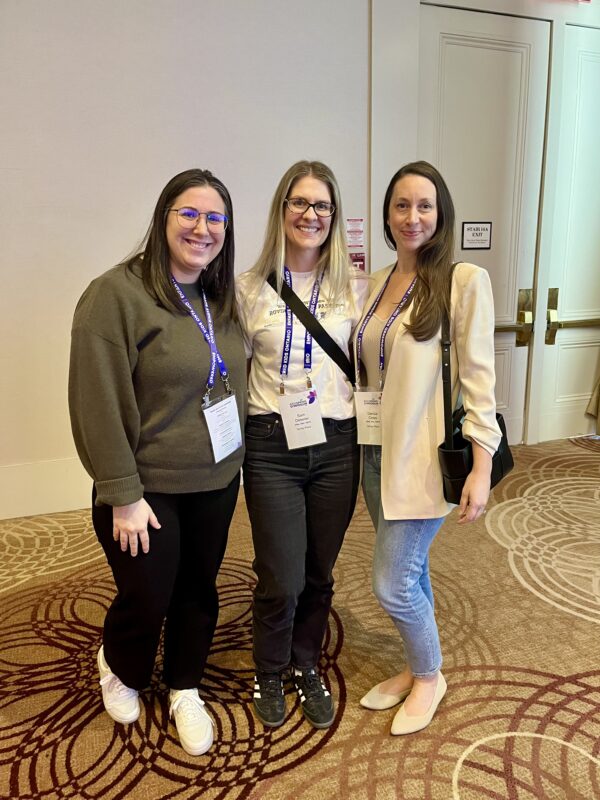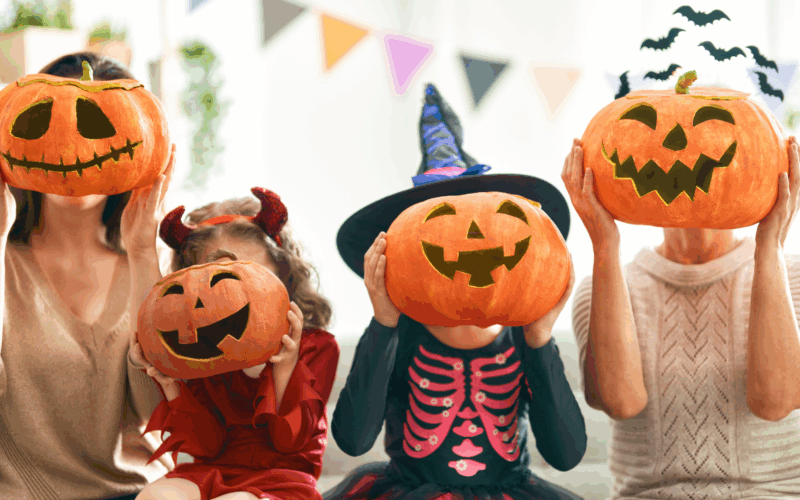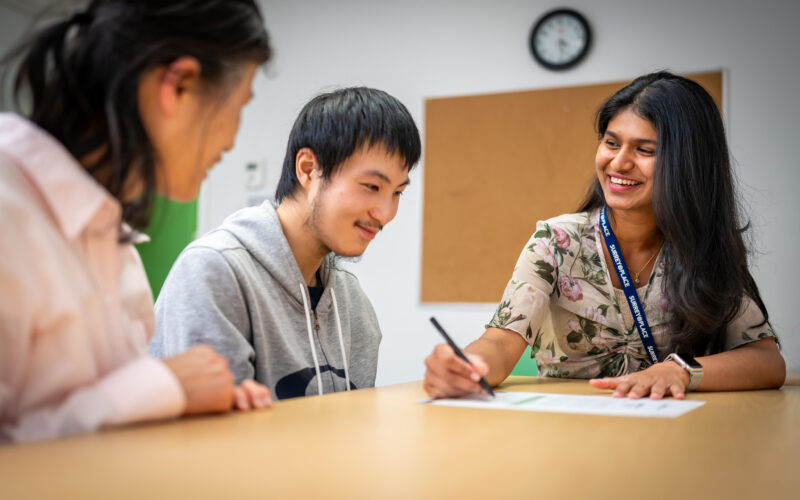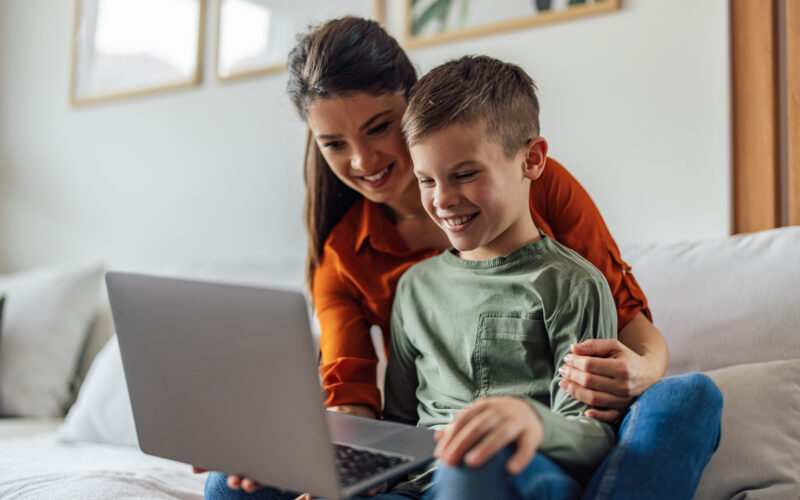By Jennifer Allan, Director of Marketing & Communications, Surrey Place
In April, I had the privilege of attending the Empowered Kids Ontario (EKO) Spring Symposium. EKO is a member association that represents more than 30 organizations providing clinical care for kids with disabilities and developmental differences, and their families.
Being there, surrounded by professionals, advocates, and community partners, was a powerful reminder of what happens when we take time to listen, learn, and reimagine what care can look like. The days were filled with thought-provoking keynotes, personal stories, and meaningful conversations, all reinforcing Surrey Place’s commitment to supporting families through our core values: accountability, collaboration, evidence-informed, inclusion, and people-focused.
I left feeling inspired and grateful to be part of this community. Below are a few reflections from the day and how they connect to the work we do and continue to build at Surrey Place.

Belonging and Visibility
Maayan Ziv opened the symposium with a keynote that set the tone for the entire event. As the founder and CEO of AccessNow, Maayan is a leader in accessibility and inclusion, and her talk, The Power of Disability: Building Spaces of Belonging for All left the room buzzing.
She spoke about the importance of having a voice, being seen, and feeling valued – not as a special accommodation, but as a fundamental human right. When she described disability not as barrier, but as a catalyst for change I looked around and saw others nodding. Her words reminded us that people with disabilities don’t need to be “included” into systems – instead we have the power to reshape them entirely.
For the folks at Surrey Place, this message deeply resonated. We’re committed to making sure families feel that same sense of belonging. Through our work in Equity, Diversity, Inclusion and Accessibility (EDIA), we’re working to make sure that the sense of belonging is felt at every level.
Lisa Binns, our VP of Children’s Services, reflected on this during our debrief:
Belonging happens when we co-create spaces where every person feels included and knows their voice matters.
Lisa Binns, VP of Children’s Services
If you’re interested in Maayan’s work, the first AccessFest is taking place on May 31. Learn more about it here: accessnow.com/fest.
Supporting the Whole Family
One of the most moving moments of the second day came from Dr. Maude Champagne, who spoke candidly about the emotional realities families face when raising children with complex needs.
As a neuroscientist, psychotherapist, and caregiver herself, Dr. Champagne brought a unique blend of professional expertise and lived experience. She invited us to acknowledge the often-unspoken grief that parents carry: the grief of dreams changed, routines disrupted, and relationships stretched. She reminded us how shame often leads to isolation, and that reconnecting begins with compassion.
Her 3 C’s – Connection, Community, and Courage – offered a beautiful framework for what it means to support families holistically. But the moment that stayed with me most was when Dr. Champagne shared a set of phrases she implored attendees to use: “I believe you. I’m here. How can I help?”
We’re already taking steps to do just that. Our Caregiver Peer Mentorship Program pairs experienced parents with those who are newer to the journey, providing support, shared understanding, and encouragement. Our Family Advisory Council helps ensure families have a direct voice in shaping services. And through our Lived Experience Associates, we’re working to embed first-hand experience into how we design and deliver care.
As Jeanny Scantlebury, VP of Adult Services, shared after the talk:
When families share their stories, our first response is always, ‘We believe you.’ It’s how we build trust, and how we begin to walk alongside our clients.
Jeanny Scantlebury, VP of Adult Services
Reimagining Care: Precision Health
The closing keynote, led by Dr. Stephen Scherer and Dr. Evdokia Anagnostou, explored the future of neurodevelopmental care. One driven by genetics, research, and personalized support.
Their message was clear: it’s time to move beyond diagnostic labels and focus on each child’s individual biology and lived experience. Autism and other neurodevelopmental conditions, they explained, are not singular diagnoses, but rather collections of traits that present differently from one person to the next. With better tools and earlier detection, we can create more effective, individualized treatments, delivered at the right time in a person’s life.
Dr. Scherer summed it up by saying “Individual approaches are the way forward in ASD.” Dr. Anagnostou added, “we need precision because the label is not going its job.” Both encouraged us to rethink traditional systems and move toward a model that sees the whole person, not just a diagnosis.
As a parent, I found this deeply affirming. It validated what many of us already know: our children are unique, and their care should be, too. Rather than a one-size-fits-all model, this research points to a future where care is as individualized as the people it serves.
Reflections from the Surrey Place team
The Surrey Place team showed up in full force for this event – not just to listen, but to learn and carry that energy forward into our work.
Joining me were:
- Lisa Binns, VP, Children Services
- Jeanny Scantlebury, VP, Adult Services
- Toli Anastassiou, Director, TRE-ADD, School Support Program and Urgent Response Services
- Danica Cross, Director, Cross Agency Services
- Olivia Hagemeyer, Director, Children and Youth Services
- Lisa Nelson, Manager, Service Coordination
- Sam Detwiler, Senior Communications Specialist
Each of us took something different from the day, but we all walked away with the same feeling: this work matters, and we’re in it together.
Sam Detwiler – The conference was truly inspiring; filled with engaging presentations and insightful speakers who sparked thoughtful discussions. It was incredible to see so many people come together, all united by a shared goal: improving care for children and families.
Olivia Hagemeyer – The EKO Symposium presentations offer deep insights into improving the lives of people with disabilities. I was profoundly inspired by a keynote on disability and belonging, which highlighted how disabled individuals’ experiences can reshape communities into more inclusive spaces. This session motivated me to explore new ways to create environments where everyone feels valued and empowered.
Toli Anastassiou – This was my first experience attending the EKO conference. I was impressed by the scope of the talks and volume of talks available. This conference took me out of my typical conference comfort zone, which was wonderful. Further, the quality of the speakers (not only the key notes) was excellent. I hope to return and contribute some of the work that we are in our clinics in the near future.
Danica Cross – I really enjoyed seeing how other agencies across the sector are working to solve similar challenges we are facing at Surrey Place. It was inspiring to see how client and family engagement is at the forefront and helpful to see how others are using technology to enhance service delivery efficiencies and support change efforts. I was able to make new connections and have some new tools to try out with the central intake team to enhance our clinical listening skills.
Events like this one remind us that Surrey Place isn’t just a service provider: we’re a partner, an advocate, and a community.
Supporting Families Beyond the Symposium
If you’re looking to stay connected or get more involved, here are just a few of the ways Surrey Place supports families all year round:
- Caregiver Peer Mentorship Program: Connect with another caregiver who understands your experience.
- Family Advisory Council: A committee, informed by lived experiences, that helps shape services.
- Family Connections Facebook Group (external Facebook link): A safe space for families to connect with one another
Whether you’re new to Surrey Place or have been part of our community for years, these programs are here for you.
Final Thoughts: We’re In This Together
Walking away from the EKO Symposium, I felt hopeful and energized. The speakers reminded me that this work matters deeply.
We are not alone in this work. We are part of a community that believes in listening with compassion, acting with intention, and creating systems that support every member of the family.
To those of you reading, thank you for showing up: for your child, for your family, and for this community. I hope these reflections spark conversations, strengthen connections, and remind you of your own power, voice, and belonging.

If you have thoughts to share, we’d love to hear from you. Reach out to us at: communications@surreyplace.ca.
Let’s keep building spaces of support, together.


